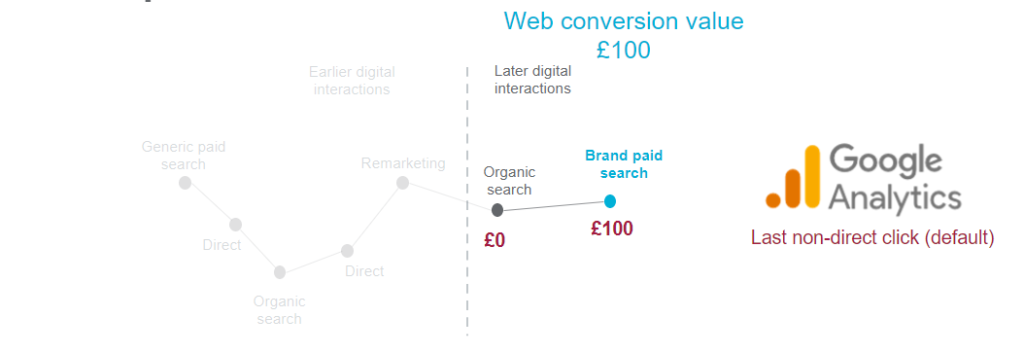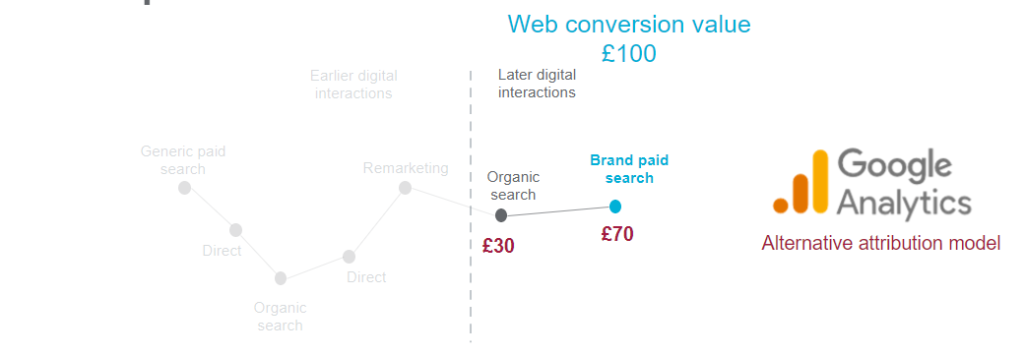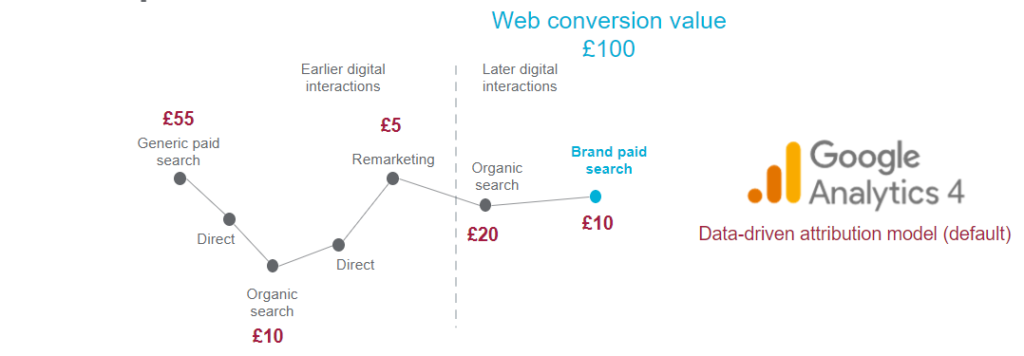
![]() Insights
Insights
The arrival of GA4 brings with it an array of innovative features. Built for the future of marketing and the changing multi-device landscape, attribution and modeling have evolved to measure search, clicks and the touchpoints that lead to conversion more efficiently.
The reality is though that a huge amount of conversion paths are missing earlier visits, meaning most conversion paths only show the last one or two visits leading to a conversion. The earlier visits though are often the most significant as these show where a customer’s awareness was raised and ignited their interest in your website. But a customer’s purchase journey can include them visiting the website several times, making it harder to connect each touchpoint. The main three are:
Every website that follows these rules has a missing percentage of users. So how do you attribute these conversions?
In this example, all credit is given to the last touchpoint, and only the last two can be viewed in Google Analytics.

Using a different attribution model lets you give value to more than one touchpoint in Google Analytics, but, there are still many earlier interactions that receive no credit.

By using GA4’s data-driven attribution model, we can now give value to the previously invisible, earlier touchpoints.

Given the problems with Google’s original solution for tracking users, GA4’s new modeling is designed to fill the gaps in customer journeys. One of the key tools enabling the platform to implement modeling effectively is Google Signals. Google Signals holds data on its users logged into a Google account, on their mobile or desktop devices, if they have consented to ads personalization. This allows Google to associate data collected with that user across devices.
Google Signals data joins up full cross-device paths more accurately on a subset of your analytics data. This is referred to as the observed data for modeling purposes. Modeling is where Google uses this subset of observed data to infer the behavior of the rest of your data. The result is more accurate reporting of the “unique users” metric and more complete conversion paths.
Another major improvement GA4 offers is a better use of attribution. In Universal Analytics (UA), all main reports used the last non-direct attribution model and attribution models were in a separate ‘model comparison tool’.
In GA4, you can configure and choose the attribution model you want to use at a property level. This applies throughout the reports, interface and in the export of conversions to platforms like Google Ads and the GMP suite. This is a huge advance when combined with modeling that helps to fill conversion path gaps. Also, unlike GA360, data-driven attribution is available to all accounts and the default option when you create a property.
The data-driven model is based on a similar approach to Universal Analytics, but has major improvements. Moving away from working solely with the last four path touchpoints, the new model adds further iterations and corrections to the calculation. This lets you:

Marketers generally agree that no attribution models are 100% correct in reporting the truth. Google is fully transparent in their new approach to data-driven attribution and has published details of the mechanics to read and scrutinize. The reality is that each model provides an alternative perspective. However, when combined with the modeled paths, you can be confident that the new GA4 data-driven model will be as close to that truth as you can get. That’s why, it’s crucial to adopt to GA4 as soon as you can.
Are you struggling to understand your data without cookies?Get in touch and our experts will help you

![]() Insights
Insights

![]() Insights
Insights

![]() Insights
Insights